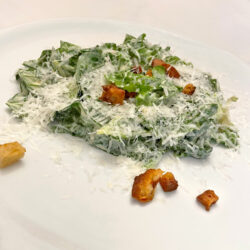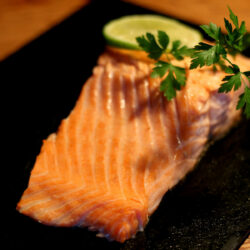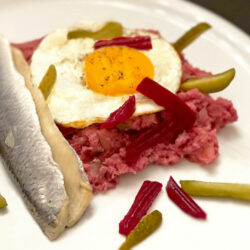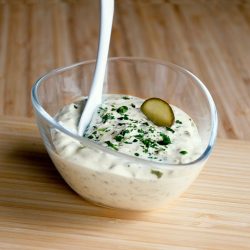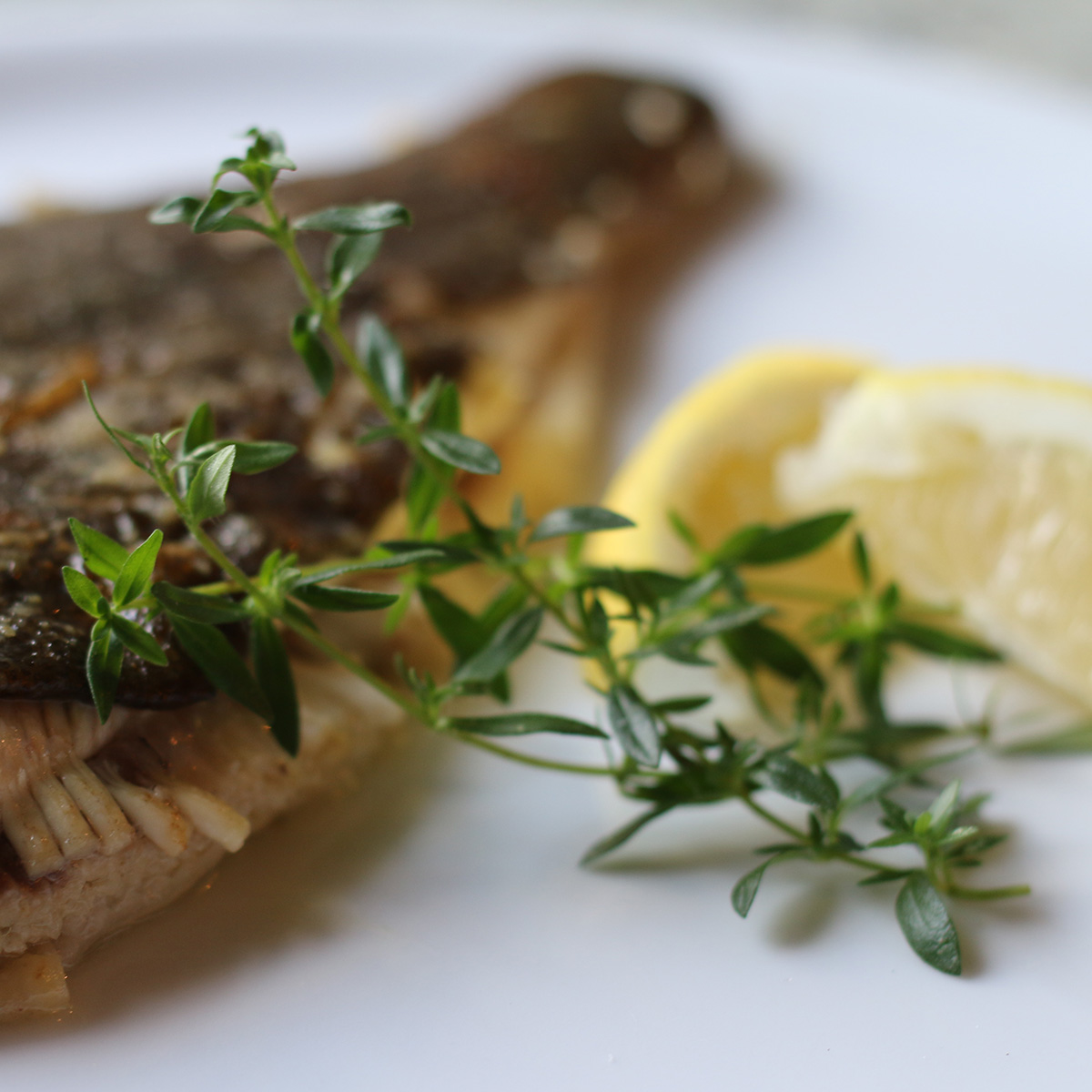
Plaice Finkenwerder type
Plaice Finkenwerder type or plaice Büsum type?
As a “real Hamburger”, I naturally have clear priorities. However, I am not only local patriotic: I just like the taste of the plaice together with the bacon dip better. I love crabs. But together with a plaice, they just don’t quite appeal to me. Marion, however, prefers the Büsum kind.
Does not matter, because the basic recipe for the preparation of plaice is basically the same. Whether it will be a plaice Finkenwerder Art or Büsumer Art, that you decide only at the very end of the preparation. So with this recipe you can serve both preferences.
Preparation time
10 minutes
Cooking time
approx. 20 minutes
Servings
for 2 persons
Kitchen know-it-all
" North Sea plaice
North Sea plaice
The North Sea plaice is mainly caught in the area west of Denmark and especially on the Dogger Bank – a huge sandbank in the German Bight.
Plaice grow to an average length of about 20 to 40 cm and can live up to 50 (!) years. The females can lay up to half a million eggs.
Adult plaice feed on small mussels, as well as crabs & shrimp.
(Ah. A clear plea for “Scholle Büsumer Art” – plaice with crabs.)
The main fishing season is in summer. At least for those who have not already gone into the net in the spring as a delicious may plaice.
The strong taste of their white, juicy and firm flesh makes plaice one of the most popular food fish in Germany.
Ingredients
- 2 fresh plaice ready to cook (washed and scaled)
- 150 g pancetta
- 1 lemon
- 75 g flour
- 2 tablespoons butter
- Salt
- Baking paper
Matches …
… both potato salad and fried potatoes.
If you like something fresh with it, I recommend a cucumber salad.
Plaice Büsum style
The recipe for plaice Büsumer Art is virtually the same recipe as for plaice Finkenwerder Art.
With the plaice Finkenwerder kind one gives Speckstippe before serving over the fish, with the plaice Büsumer kind simply shrimps.
Preparation
Prepare plaice
Preheat oven to 90°C.
In the process, you can already put the plates in the oven to preheat.
Halve lemon
Marinate the scaled and washed plaice with a little salt and lemon juice of one half of the lemon and let it soak for a few minutes.
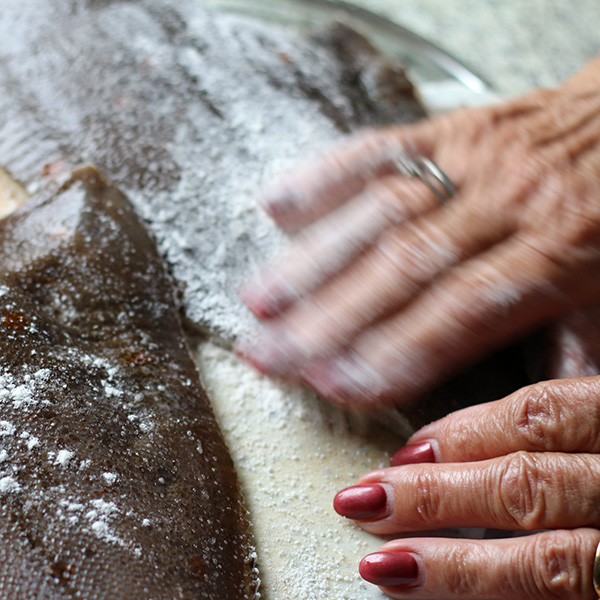
Spread flour on a large plate and roll (flour) plaice in it.
Sauté plaice
Their clods want space.
So if you can’t quite fit the two fish together in one pan, add a second pan.
Butter the pan, then reduce the heat (half power).
Sear the plaice first on the top side (this is the dark side) in the pan (approx. 4-5 min.).
Turn carefully, preferably with an extra-large spatula.
Plaice on the underside (this is the light side) also approx. 4-5 min. sear.
Cook plaice in the oven
In the pan, the plaice very easily gets too much heat.
Then it quickly becomes dry & and the skin, which is supposed to get nice and crispy, gets “stuck” in the pan. Therefore, I prefer to let them cook in the oven.
Carefully lift the clods out of the pan and place them on the baking paper – greased with a little butter – in the oven preheated to 90°C. (With the light side facing down.)
The plaice in the oven for about 8 to 10 minutes. even let pull.
Cut second half of lemon into lemon wedges.
Bacon dip
This makes the plaice the “Plaice Finkenwerder style”.
Cut pancetta into small cubes and fry in hot pan.
Make sure that enough fat comes out and that the bacon cubes are fried crispy.
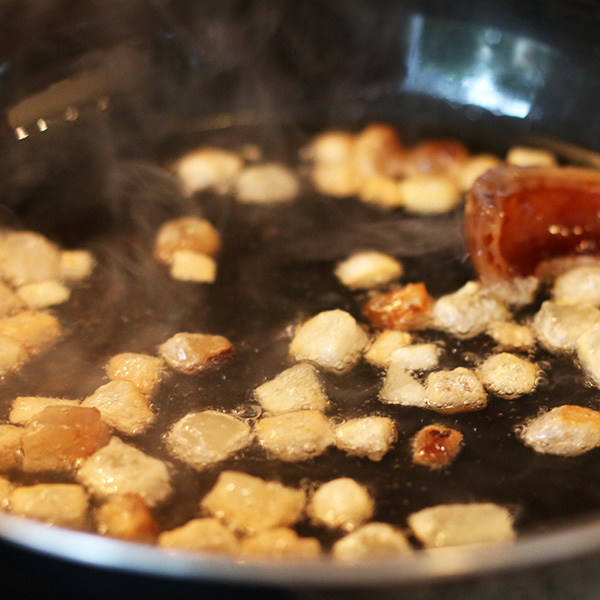
Bringing things together
Remove from the oven and arrange on the preheated plates.
Pour bacon drippings over the plaice.
Place a lemon wedge on the plate.
Serve with potato salad or fried potatoes.
